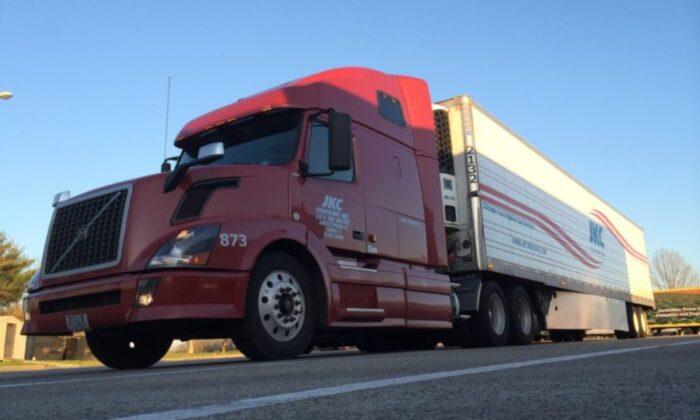Truck drivers and larger carriers are facing a tough business environment, which may get worse than it did during the Great Financial Crisis, according to a report.
Freight demand has deteriorated over the last year due to a sluggish economy, and per-mile rates for drivers have plunged since the pandemic-era boom in 2021, which brought a surge of goods onto the market.
Trucking Industry Signaling Early Signs of a Broader Downturn
The trucking sector is known as a bellwether for the broader economy since it covers nearly two-thirds of tonnage carried by U.S. freight transportation, the American Trucking Association said.A major downturn in the volatile trucking industry could signal a recession that could be worse than that of 2008 to 2009 or even 2019.
The low barriers to employment in trucking make the sector extremely volatile, as thousands of small-scale operators usually ramp up capacity when carrier rates start to rise.
A surge in overall costs and a drop in demand in orders have painted a bleak economic picture, according to Bloomberg’s “Odd Lots” podcast interview with FreightWaves CEO Craig Fuller and editorial director Rachel Premack.
Investors are trying to see if the current downturn would have an effect on consumer demand, which may have a strong effect on the chance of a looming recession and the cyclical nature of the industry.
In previous industry downcycles, Fuller noted, “not only did you see a slowdown in volume related to the industrial economy, but you also saw an overbuild of capacity.”
“We’ve seen a massive surge in trucking capacity. Over just the last year, there’s been an increase of as much as 8% of the dispatchable capacity in the market. So in this situation where it’s completely flooded, there’s so much capacity out there,” he continued.
The situation for individual drivers is worse than the levels seen in the 2019 slowdown, one of the worse years for the industry.
Drivers are currently earning per-mile rates as low as $1.49 per mile, according to FreightWaves, which is a sign of how bad things are right now.
Those rates hovered at $3.01 a mile at the peak of the trucker boom in 2021.
Industry Having Difficult Time Paying for Operations
Shelly Simpson, president of JB Hunt, a trucking firm, said in a recent earnings call that the current market is “reminding us of 2009.”As operations became more expensive, trucking companies have been forced to pay more than usual to run their vehicles and find enough mechanics to maintain them.
Meanwhile, the Federal Reserve’s hawkish interest rate policy to reduce inflation is exacerbating the stress on the supply side.
“You look at the cost of capital,” Fuller said. “One of the things to remember is that trucking is a capital-intensive industry,” despite having one of the lowest returns on capital of any industry.
“A lot of these trucking companies finance their working capital, and they finance their trucks. What we’ve seen is a pretty dramatic increase in cost.”
The American Trucking Associations’ seasonally adjusted for-hire truck tonnage index dropped 5.4 percent in March, the largest monthly drop since April 2020.
The rejection rate for new truckers has fallen to 2.53 percent, from the nearly 30 percent rate seen in 2021, due to a lackluster market.
However, the rate of rejections also happens to be the key measure that analysts watch when searching for the eventual end of the downturn, explained Fuller.
“The tender rejection data will start to basically turn around and you’ll see it accelerate,” he said.





